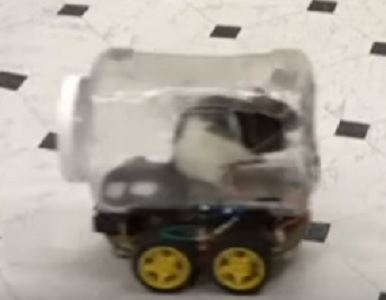If you call the next driver to cut you off in rush hour traffic a “rat” you may not be insulting them as much as you think.
Scientists at the University of Richmond released findings from a study they conducted where they taught rats to operate a simple motor vehicle.
The goal of the study was to test the ability of the brain to change over time.
Kelly Lambert, study author and head of the University of Richmond’s Lambert Behavioral Neuroscience Laboratory, trained two groups of young rats: One bunch raised in an “enriched environment” with toys, ladders, balls and pieces of wood designed to spark mental stimulation, and another reared in a standard, unexciting lab cage.
The rats learned to enter a custom “rat-operated vehicle,” or ROV, adorably constructed from a one-gallon plastic container turned on its side.
Once inside, the rat racers would stand on an aluminum plate and press on a copper bar that would trigger the wheels’ motor. They’d hold down on the bar until they propelled their tiny car to the end of their enclosure, where they collected their reward: Froot Loops.
When it came time to drive, the rats who played with ladders, balls and toys were more adept at operating and steering the ROV, thanks to the neuroplasticity (their brains’ ability to change over time) triggered by their environment. Their unstimulated cage counterparts effectively “failed their driving test,” Lambert said.
The real value of the study was an examination of the stress level of the rats who learned to drive.
They displayed higher levels of hormones associated with stress control. According to the study, the rats who learned to drive displayed emotional resilience.
I don’t know if it will help anyone to know rats can be taught to drive. If we see them on the roads soon, then we’ll know science has gone too far!
